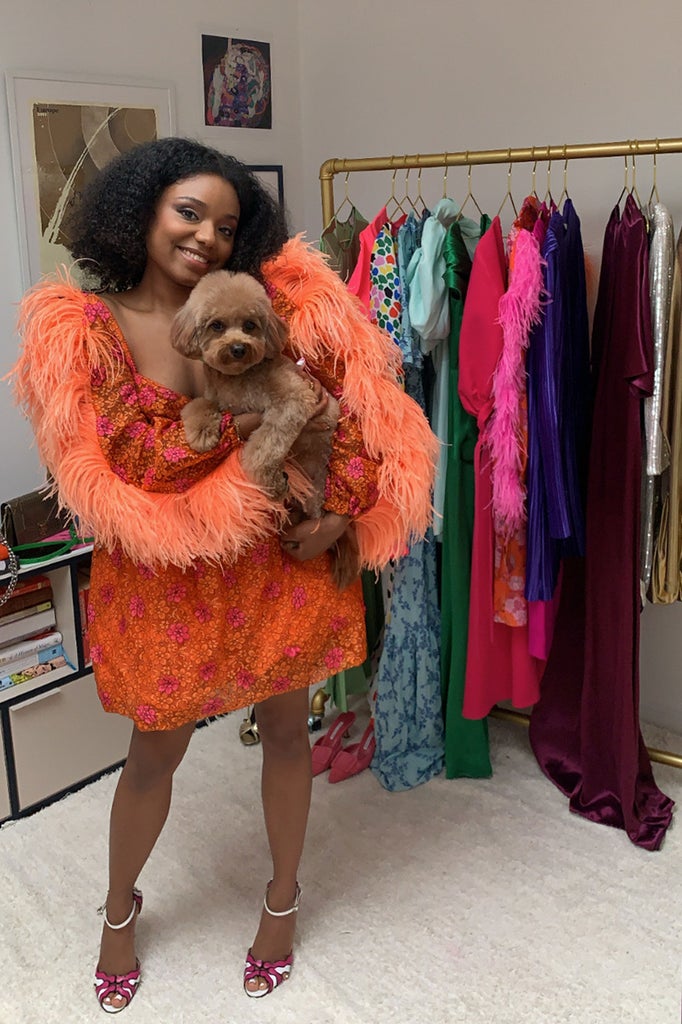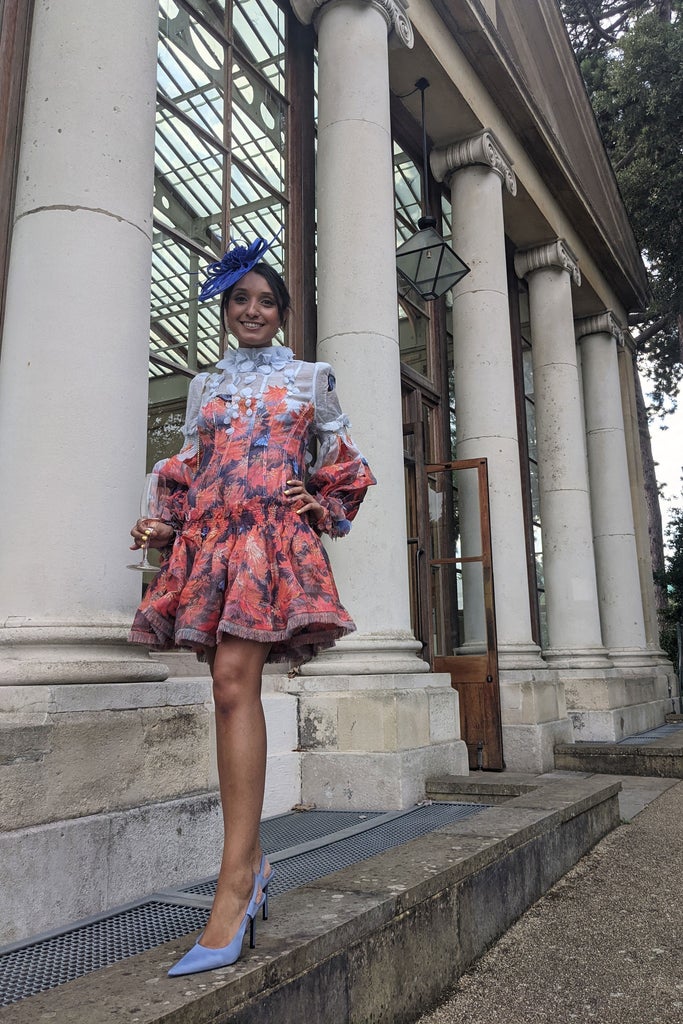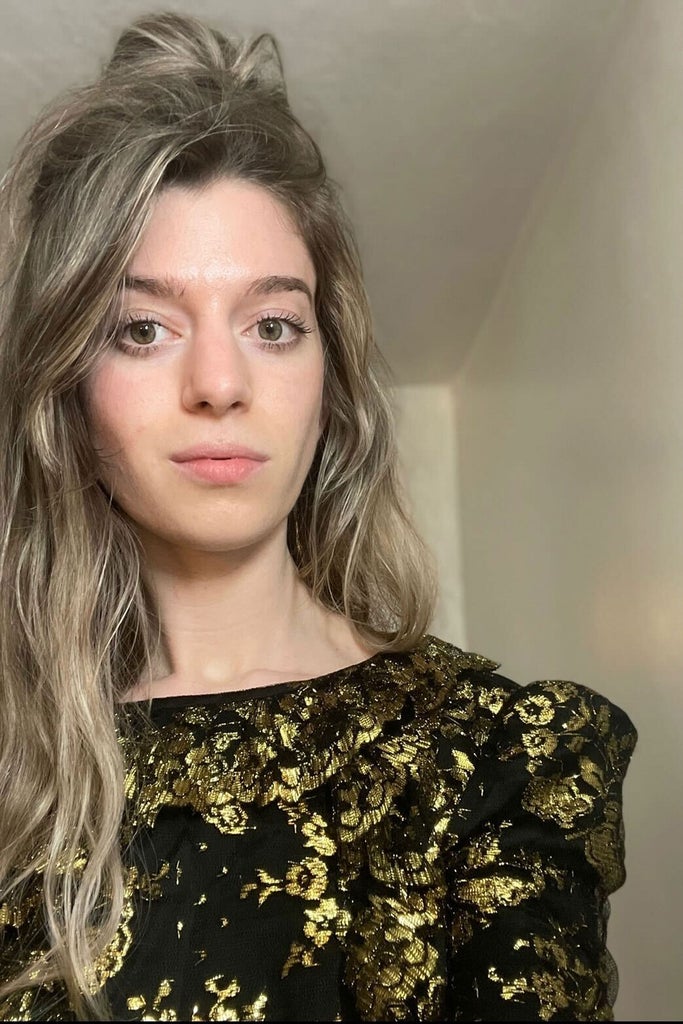The idea of renting a stranger’s clothes might’ve sounded outlandish just a few years ago but in 2022 hiring a dress for your friend’s wedding is as conceivable as buying one new. With various fashion rental platforms growing in usership – from peer-to-peer options like HURR and By Rotation to stylist-based and hybrid services like Front Row and Hirestreet – more people than ever are wearing designer styles for a fraction of the retail price.
When you can rent a Ganni blouse for a fiver a day or Saint Laurent heels for less than a third of their cost, not only does luxury fashion become more accessible to the masses – it can also contribute to a more circular economy.
If you’re living in a major city this may seem super commonplace but a survey by market research firm Appinio indicates that only one in seven British women and non-binary people, mostly Gen Z and millennials, have rented clothes from someone they don’t know. But those numbers are growing.
While hesitation about renting and lending persists – from the worry of getting your clothes damaged to the idea of paying to wear a stranger’s clothes and the very real lack of size-inclusivity – one element of the process that we’re all getting more curious about is the amount of money you can make from doing the lending.
If you have the privilege to own statement, vintage or designer pieces, you can now list items from your closet directly onto a rental app, charge daily rates and make disposable income – and quite a lot of it. In the era of the side hustle and passive income TikTok, wardrobe lending could be the next notch in the lucrative worlds of fashion and tech.
We reached out to four women who have experienced the benefits of wardrobe lending in recent months. From a charity worker to a fashion marketing assistant via a financier and a lawyer, here’s how much they are profiting, doing day-to-day admin and seeing their clothes literally travel the world.

“I’ve made £1,100 from one dress – and I’ve never even worn it myself.”
Olivia Simpson is a 26-year-old lawyer and entrepreneur in London. When she’s not at her day job, she’s running a Jamaican juice brand and hosting monthly dinner parties with other female founders. She’s been using By Rotation since 2020 and has made most of her money from a size 8 maxi dress from Rat & Boa. Priced at a minimum of £16 for two days and £34 weekly, Olivia says she has now made around £1,100 in profit.
“I didn’t really know what I was doing in the beginning but I thought it was a really cool idea because I have a lot of dresses that I just wear once,” Olivia says. “I bought that Rat & Boa dress on sale for £150 and it’s been rented over 50 times and I’ve never worn it out myself. I originally bought it for a holiday that got cancelled due to COVID.”
Aside from that dress, Olivia lends multiple statement dresses from brands like Ghost and Self-Portrait and many more from Rat & Boa. She’s also listed some designer shoes and bags, including a Christian Dior saddle bag which she bought on eBay for £600 and is now nearing net zero.
As for what she does with the money she makes, most of it goes back into what Olivia now calls investment pieces.
“Now I just buy pieces in sales knowing that they’re going to rent well,” Olivia says. “And to be honest I barely wear the things that are on my account because I end up wearing the same thing every day. My fancy clothes that are on there, they definitely get around way more than me.”

“I started listing in 2020 and now I’m earning around £1,000 a month.”
When Sajni Shah, 29, started using HURR in 2020, she only listed two items: a faux fur coat from Stand Studio which retails for £500, in two different colourways. The styles had just launched at the time and even though we were in the midst of the pandemic, Sajni saw them consistently getting rented.
“That’s when I started getting more and more dresses and started realising that, you know, you can just make so much money back from renting that I was covering the cost of the actual price that you even paid for the items,” Sajni says.
Once lockdown restrictions lifted across the UK, the London-based banking professional saw her number of rentals go up. To date Sajni has 29 items listed on HURR, including a Miu Miu mini skirt, a couple of Zimmermann dresses and a Cult Gaia feather gown which she bought on sale for £400 and has now earned her around £1,000. She’s currently earning just under £1,000 a month from all of her rentals.
Sajni is aware that there’s an element of privilege in being able to afford designer items to begin with but she does note that before renting, she didn’t actually own many designer clothes at all.
“I’ve always loved designer clothes and I’ve always loved fashion but renting is a way for me to actually afford it. Before, if I just bought something that I liked, it would be quite hard for me to keep buying multiple designer items and keep them in my wardrobe until I decided one day to sell it.”

“I want to make my dresses as accessible as possible. Still, I’ve probably made a couple of thousand pounds.”
Based in East Sussex, 28-year-old Hattie Theakston only lists dresses from designer The Vampire’s Wife, which can retail anywhere from £400 to £1,500. Working as a recovery coordinator for a charity during the day, Hattie didn’t even know fashion rental was a thing until a friend told her about it this time last year.
“I just started off with one or two dresses because I didn’t really know how it worked,” Hattie says about joining HURR and By Rotation. “Now, some weeks, I won’t rent anything out and then some weeks I’ll have literally six dresses on the go.”
Having worked with The Vampire’s Wife in the past and been gifted some gowns, Hattie became a big fan of the cult brand. Now she buys their dresses on sale from places like eBay and The Real Real for weddings and parties.
“I try not to price them too highly because I want to be as accessible as possible,” Hattie says about her dresses, which can start from £65 for three days. Still, she says she has probably made a couple of thousand pounds in the last year. She admits that the admin can take up quite a lot of time, though.
“It’s the little things, like taking care of dry cleaning and repairs. And a lot of coordination and organisation,” she says. “But I would definitely say it’s worth it. It’s a nice thing to do, to be able to share your wardrobe with people. And I love the positive feedback that you get. I really, really do enjoy it so much.”
Besides a few tears and a big red wine spill that, fortunately, she was able to get out, Hattie hasn’t been too worried about any big accidents. Both HURR and By Rotation have coverage policies for accidents, although only up to a certain amount – and that’s where some of the hidden costs may lie.

“I wrote my dissertation on secondhand clothing – now I’ve made between £500 and £800 from lending my clothes.”
Georgia Dochoda, a 24-year-old fashion marketing assistant, was one of By Rotation’s first brand ambassadors when they launched in 2019.
“When they first started as an app, they were kind of controversial with the idea of renting clothes and I think it’s still a concept that people have difficulty with,” says Georgia. “But instead of someone being held back to buy an item for that one-time wear, this is making the process more circular, which I think is important.”
Georgia lends a mix of designer pieces and streetwear items that she says more suit her style. From a sold-out Stüssy fleece for a customer’s winter ski trip to a Prada headband that a woman ended up getting engaged in, Georgia enjoys renting for the stories that come out of it and the enjoyment that others are getting.
Georgia has even lent some of her pieces directly to friends, who have then paid her via PayPal. “I’ve made somewhere between like £500 and £800 so far – and I just kind of put that back into more clothes, not gonna lie.” But she is definitely less interested in lending as a revenue stream.
“I wrote my dissertation on secondhand clothing and I’ve always been super into the memories associated with clothes and items. I find it a lot more emotive than people maybe initially would have thought it would be.”
Like what you see? How about some more R29 goodness, right here?
How Are Fashion Rental Companies Doing?